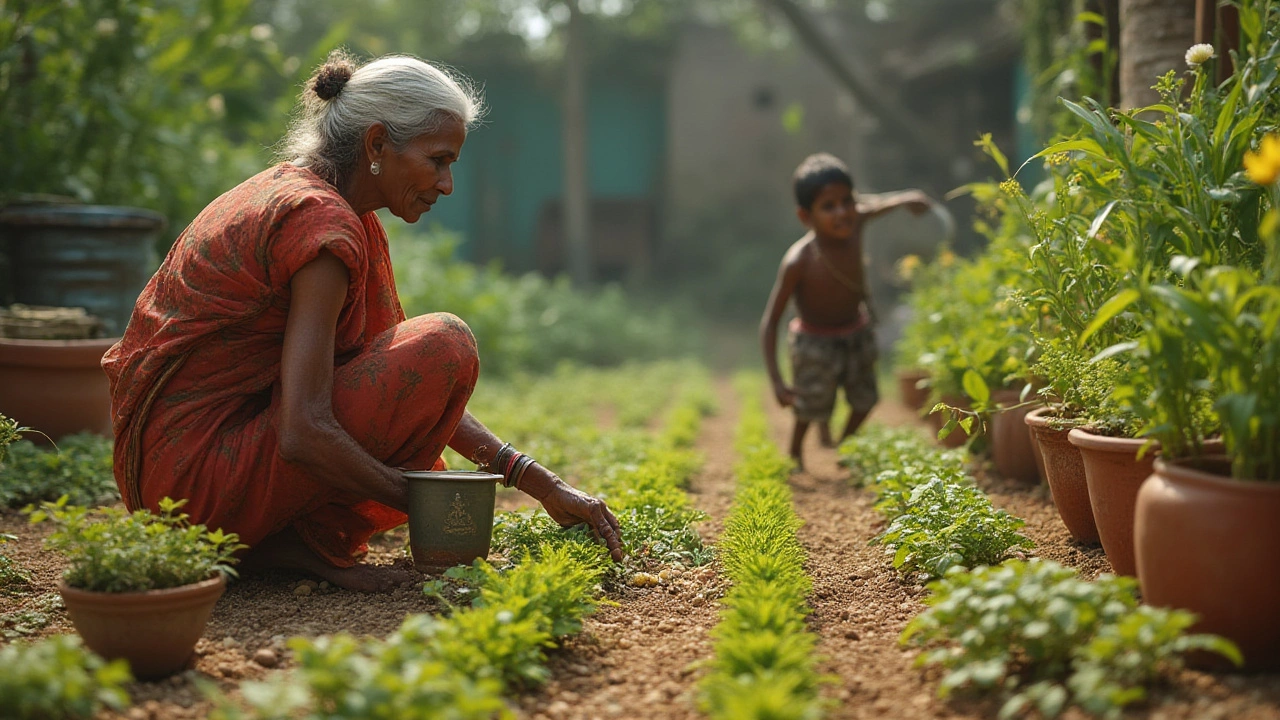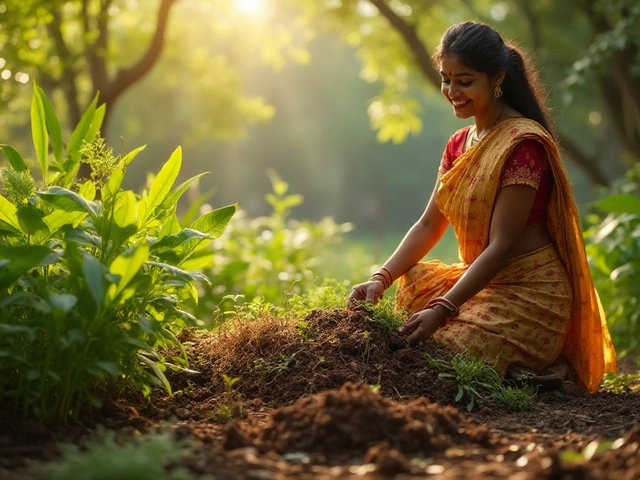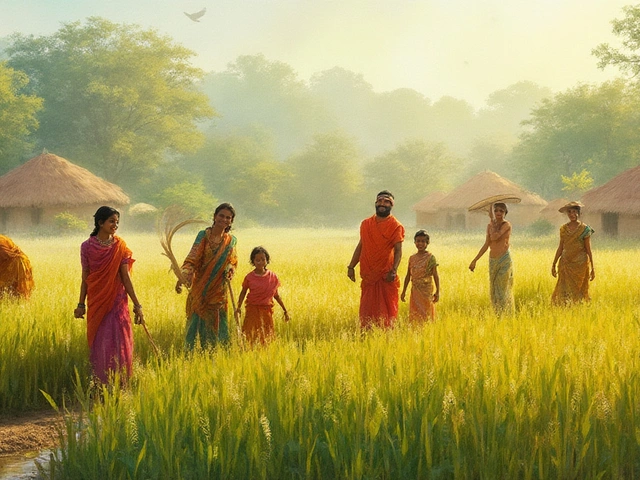Ever heard someone mention a "poor man’s crop" and wondered which vegetables wear this label? It’s not a simple story of just beans or potatoes. The phrase cuts much deeper—right into the soil, touching history, resilience, and even pride. There’s a bit of sting in the name, but there’s also a ton of power, economy, and good sense packed into every leaf and root. Many seasoned gardeners know that what was once looked down upon can make a meal that feeds a family, builds healthy bodies, and often turns up in trendy restaurants these days.
What Makes a Crop a 'Poor Man's Crop'?
If you ask five different gardeners or farmers, you’ll get at least five answers. But there’s a central idea: a poor man's crop is cheap to grow, doesn't need much pampering, and fills hungry bellies. Think beans, lentils, sweet potatoes, cassava, yam, even maize in some places. In many parts of the world, these crops are food security heroes. They've made a comeback over the years because they need little—just some decent soil, a bit of rain, and a lot of sunlight. Their nickname comes from the fact that anyone could afford to grow them, even those with very little land or money.
They’re sometimes called “staple crops” in textbooks, but the sentiment varies depending on where you live. In India and Africa, pearl millet and sorghum step in. In parts of Asia, it might be mung beans or sweet potatoes. In the UK back during the ration years, it was spuds, good British potatoes, and the ever-reliable turnip.
One reason these crops stick around is how forgiving they are. They're built tough. You forget to water them for a few days? They'll sulk but survive. The soil isn’t rich? They'll still grow, although maybe a bit smaller. Plant late? They might catch up. That resilience means smallholder farmers worldwide keep these plants close. And if you’re into sustainable gardening, you’ll know that local, versatile crops like this are the real backbone of any kitchen garden because they make the best use of whatever resources you have.
Here's something to think about: being labelled a poor man’s crop isn’t a mark of shame. In places where hunger is a real threat, these crops are lifelines. And with climate weirdness on everyone’s mind, resilience is more valuable than ever. As Professor Louise Fresco, a Dutch agricultural scientist, puts it:
“Staple crops that thrive in tough conditions aren't just for the poor; they’re for everyone who wants to eat tomorrow.”
Global Staples: The Crops That Shaped Communities
Beans and lentils aren’t glamorous—until you remember they're behind some of the world’s oldest dishes. You probably stash a can of baked beans for emergencies, right? A bowl of kidney beans with rice is still considered comfort food across continents. Check out the table below to get an idea of which crops are the heroes in different countries and what they offer in terms of nutrition and calories per hectare:
| Crop | Region | Calories per Hectare (Yearly Avg.) | Key Nutrients |
|---|---|---|---|
| Potato | Europe, South America | 17 million | Vitamin C, Potassium, Fiber |
| Beans | Worldwide | 10 million | Protein, Iron, Folate |
| Sweet Potato | Africa, Asia | 7 million | Vitamin A, Fiber |
| Millet | India, Africa | 9 million | Magnesium, Protein |
| Cassava | Africa, South America | 13 million | Carbs, Vitamin C |
These aren’t minor numbers. A crop like the potato can produce more calories per area than wheat or rice. And legumes? They add nitrogen back into the soil, acting as a natural fertilizer. When times get tough, communities rely on these so-called "poor man’s crops" for the very reason they're underrated: their ability to keep producing when all else fails.
Here in Brighton, allotmenteers still swap tips on runner beans and broad beans—their appeal goes far beyond cost. They’re quick to plant, fast to harvest, and store or freeze well. Families hand down recipes where dried pulses and spuds are the real stars. Even trendy foodies are rediscovering lentils and beets. These crops unite communities, filling food banks, soup kitchens, and posh restaurant plates alike.
- Many "cheap" crops double as soil improvers. Beans fix nitrogen, so next year’s tomatoes enjoy an extra boost.
- Low-maintenance doesn’t mean low-yield—sweet potatoes can make a meal from the roughest plot in your garden.
- Some “poor man’s” staples, like cassava, saved nations during famine years, acting as a real safety net.
Not bad for crops people once turned their noses up at. Even World Food Programme stats show that crops like millet and cassava now feed more than 500 million people between Africa and Asia. It’s fair to say these humble plants punch way above their weight.

Growing Tips: How to Win With Low-Budget Crops
If you fancy growing your own "poor man’s crop," you’re in luck—it’s less about fancy gear and more about smart choices. These plants suit beginners and seasoned growers alike. Plus, saving money on fresh food is always a win. So, what should you do if you want to try these champion crops?
- Poor man's crop: Choose seeds that thrive in your local climate. Potatoes in the UK, cowpeas in West Africa, or mung beans in Southeast Asia.
- Start small—no need for huge plots. You can even grow beans in containers or turnip greens on your windowsill.
- Don’t stress about the soil too much, but add home compost for a boost. Most of these crops handle poor soil, but why not help them do better?
- Try “intercropping”—planting two crops together. Beans and corn make a classic pair. The beans climb up the corn stalks and feed the soil along the way.
- Water deeply once or twice a week, not little and often. Deep roots mean stronger plants – and less work for you.
- If space is an issue, go vertical. Runner beans climb fences or bamboo poles, producing masses of food in a tiny footprint.
- Collect and save your own seeds from healthy plants. It makes next year practically free and builds resilience over time.
- Watch out for pests, but don’t panic. Most of these crops bounce back. Simple tricks like companion planting (think marigolds with potatoes) or a blast of soapy water help.
There’s also a hidden bonus: these crops store well. Harvested beans can be dried and kept for a year or more. Root crops like potatoes, yams, and sweet potatoes, if kept cool and dark, last until the next planting. This stretches those hard-earned pounds or dollars and fills the gap when supermarket shelves look a bit empty.
People often forget the mental benefit, too. Growing something practical gives a sense of control, especially when finances are tight or life feels uncertain. Watching a few humble seeds turn into meals on your table can cheer you up like nothing else.
Reputation Shift: From Poor Man's Food to Trendy Plates
Here’s the twist nobody saw coming: The “poor man’s crop” has started stealing the limelight. What used to be considered food for the desperate is now appreciated for its low environmental impact, high health value, and taste. Take lentils—they’re everywhere, from vegan burgers to posh soups in Brighton cafes. The flexitarian trend, where people eat less meat, has brought pulses and root veggies right back into fashion.
If you flick through Instagram right now, you’ll spot influencers and chefs celebrating homegrown carrots and DIY potato patches. Some city restaurants now feature dishes that were peasant food not long ago—think beetroot risotto or slow-cooked haricot beans. Food trends come in waves, but the "poor man’s crops" stick around, partly because you just can’t beat food that’s affordable, filling, and actually does you good.
Even nutritionists recommend adding more of these tried-and-tested staples to a healthy diet. They’re fibre-rich, low in fat, packed with plant protein, and good for gut health. Plus, growing your own means you avoid pesticides and limit your food miles, making it both a healthy and green choice.
Feeling up for a gardening adventure that won’t empty your wallet? Give these undervalued crops a proper chance. You’ll get more than just food—you’ll get a story, a bit of history in every bite, and a surprise boost in your pride.
Next time someone calls lentils or potatoes the “poor man's crop,” maybe grin and remind them: these are the foods that built and saved entire nations. Not bad for a humble spud, right?




